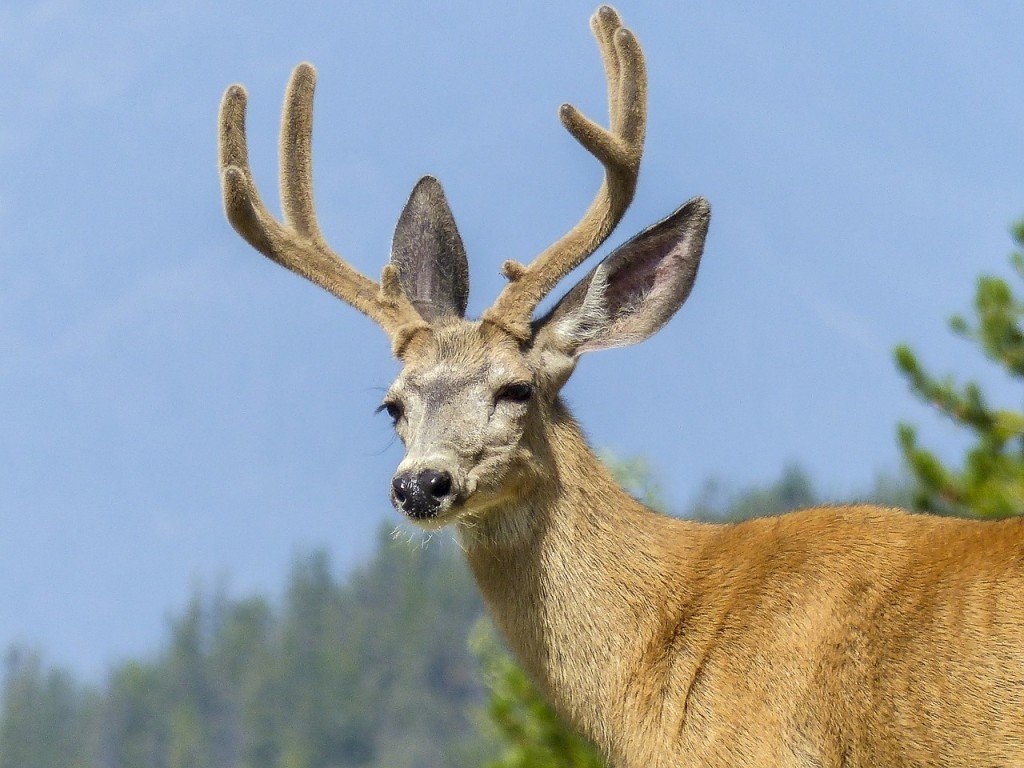
Deer are amazing creatures. Whether it is a stag with great antlers, a buck growing a pair of horns, an antelope with rugged horns, or otherwise a doe or fawn lacking either of the mentioned features, they never lack in the aesthetic department, with horns, or antlers, or not.
Unlike other four-legged animals of their kind, however, deer are a species that is as abundant as they are diverse which can be found at almost every continent in the world.
With species such as the mule deer, white-tailed deer, moose, elk, red deer, roe deer, fallow deer, chital, pudu, and others more making the list of the family, deer are a unique yet common creature of the planet.
Because of the same reason, the deer species makes not just for food of wildlife's known predators but also as an ideal specimen for taxidermy. While not exactly a dying art, it has seen its decline, especially the traditional approach of hunting the live specimen.
There could already be many descriptions of what taxidermy is, including to what was just mentioned, but nothing probably can be more accurate than this description as stated in Taxidermy.net:
“Taxidermy is a general term describing the many methods of reproducing a life-like three-dimensional representation of an animal for permanent display.”
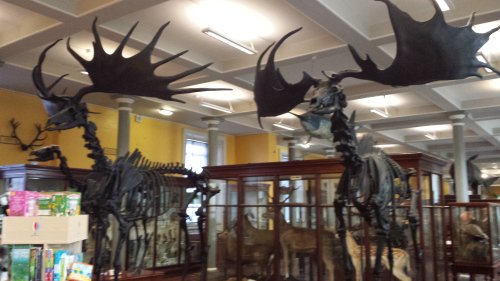
Among the many creatures in this world, none are probably more hunted than deer in the wild by man, apart from birds.
Although there is not a definite date as to when this practice has begun, certain history tells us that this has been a practice dating as far back as ten thousand years ago. If you are to look at man's historical timeline, such a time predates even the very discovery of gun powders which gave birth to guns that are used to hunt them to this day.
However, deer are hunted not just always for a hobby. Others who are into the art of making lifelike figures of animals, known as taxidermy, hunt deer to be used as a specimen either for sport, for trophy, or for business. In other words, they make mounted deer.
But what makes deer the specimen of choice among taxidermists?
There are possibly many different reasons why anyone would choose a deer, among any other species of animals, as an object of taxidermy, and is likely due to the following reasons:
As a group of animals that is neither in the list of being vulnerable, threatened, or worse, endangered, deer are still far from going extinct.
As far as its population is concerned, the deer population has increased since the 1990’s with about 30 million deer in the US alone. In fact, deer are numerous when their habitat have little to no predators which makes the population further grow but are seen as pests by the natives to where they thrive because of their consumption of vegetation as plant-eating animals.
If you are already used to hunting flightless birds for whatever reasons apart from taxidermy, a deer poses a challenge. Deer are agile and alert creatures with a keen sense for harm and can act accordingly for its very survival. Notwithstanding the Bambi film, hunting deer is a challenge in itself.
But for once, governments are proposing to hunt deer because of their ballooning population. This has not been very effective, though, since only male, adult deer are of interest to hunters. These are the hardest to hunt since they are the fastest and are rarer than bucks and female deer in the open.
Why the male deer? Here's why:
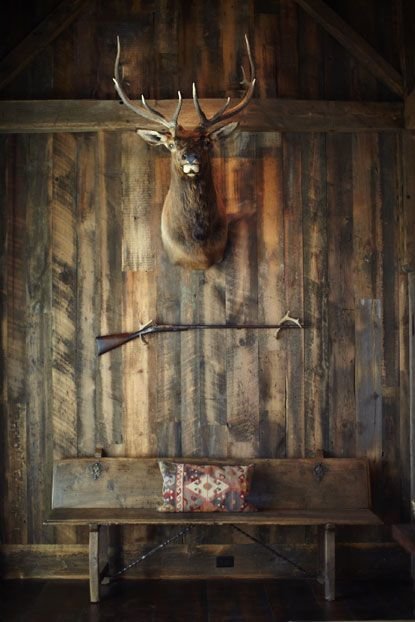
Deer are hardly domesticated which makes them hard to see at the urban or suburban level, even in some rural areas. As animals of the wild, deer are not as tamed as common domesticated animals of today. In other words, deer are animals that are not a common sight unless you personally go around specific places where they thrive.
The most prized part of the deer are of course, the antlers. They cut an impressive figure along with a slender deer head, perfectly preserved and artistically rendered. Perhaps the thought of its bright eyes looking down on a den or hearth could be motivation enough.
Unless you are referring to a recently-born buck or fawn, then a mature deer is a creature of moderate size in comparison to man (compare a mule deer mount to a man's size).
Working on deer is also easier than other common animals such as duck or other birds since the specimen is less delicate and large enough to be repaired should you make a mistake.
The principle of taxidermy is very much the same regardless of the type of specimen used. They only vary on certain steps.
If you are used to hunting ducks or similarly flightless birds, for example, you may find the step in measurement to be completely optional in the whole process of taxidermy. However, this is not necessarily the same truth for a relatively larger specimen such as a deer especially doing shoulder mounts.
Before proceeding through the process, it is wise that you already have an idea as to the overall procedure of deer taxidermy, especially if you do not have a mentor to personally teach you about it. There are, however, workshops or schools you can go to in order to learn about taxidermy first hand.
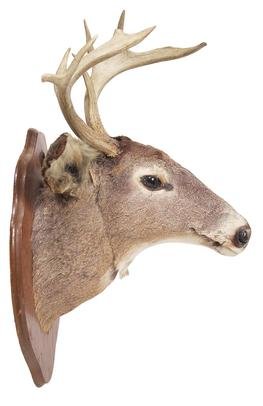
You can use the totality of the deer's skin for a whole-body taxidermy ptoject or only those of the deer's head, neck, and some portion of the chest with the deer skull, measurement plays a somewhat critical role as an initial step for its taxidermy.
Skipping this step may result in miscalculations which might make the skin too small or too big for its cast. Both of which can be fixed quite easily by someone with a fair amount of skill.
When measuring dee should mounts, the common sites involve the distance between the closest corner of the eye to the nose and the actual tip of the nose. Another part of interest is the circumference of the neck just 3 inches below behind the ears, and relative measurement behind the ears itself.
Proper measurements in these sites is important in order to align the manikin into any of these deer head mount poses: semi-sneak, full sneak, upright, and aggressive upright.
On the other hand, doing a full body deer mount oftentimes uses field dressing. A lot of artists neglect this step yet it can be used for multiple poses depending on preference.
Skinning is the separation of the animal's skin from the rest of the animal body's flesh and is a step essential to taxidermy.
If you are to skin a deer for taxidermy, the ideal skinning method should always start from behind the deer specimen's front legs while it is hanging in an upside-down position. Check out this video:
Do note, however, that the cutting of the specimen does not start from there, This is only applicable for the skinning process. The specimen is first and foremost removed of its innards via a vertical incision from the sternum to the crotch of the deer.
Of all of the deer specimen's body parts, deer head taxidermy – specifically around the eyes – is known to be the most difficult to operate when doing the skinning procedure. This is because the head is often the part that gets damaged the most, especially for inexperienced or first-time taxidermists on a deer specimen.
If you're to taxidermy deer head, always pay careful attention towards the sensitive areas of the eyes of the specimen. You have to carve them out without breaking fluid sacs so you don’t ruin the fur around the sockets. These parts are fitted with glass or similar material to recreate the wide-eyed look that deer are known for.
Doing a shoulder mount, you would normally not be using all of the deer's skin, For the sake of resourcefulness, you can make use of the remaining skin as either a deer skin rug or a deer hide rug.
The tanning procedure for this, though, is a bit different since you are going to use it as a rug. Otherwise, all of the skin will be used.
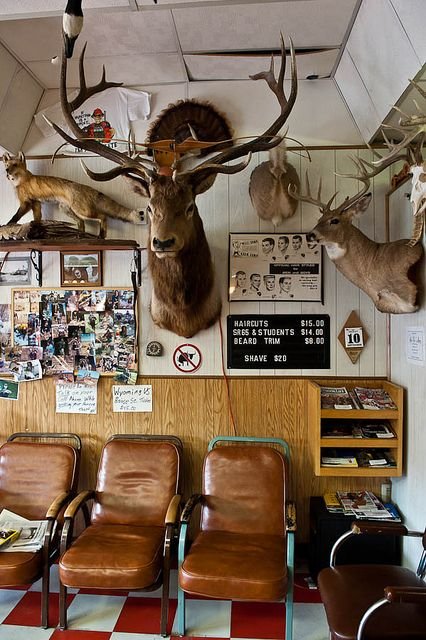
While most taxidermists would already have the needed materials at this point for the tanning process and casting, or otherwise known as the deer mounting kit, you may need additional tools to recreate the specimen after it’s been cleaned and prepped.
However, some kits are dependent on the of specimen you're having and not always applicable for general species. If your specimen is an antler, for example, you may need a deer antler mounting kit for it.
As there is a good demand for these materials in the market, you can easily find yourself a shop which sells deer mounting kits, among other kits, on the internet or at your local hobbyist’s shop for a fair price.
With the skin now separated from the rest of the body, it has to be treated with a mixture of salt, alum, and borax in a container with gallons of water to be boiled altogether and where the specimen will be soaked once cooled. This is used to preserve the skin and give it a natural, leather-like finish that can be easily maintained.
As it is impossible to skin a deer specimen cleanly without the excessive flesh still attached to it, the next logical step from tanning the skin is to clean it and remove those unneeded supposed-to-rot tissues such as the cartilage and leftover fatty tissues.
With the tanned skin scraped off of its unwanted fleshy parts, the skin can now be sewn to cover any lingering holes. This is important for covering gunshot wounds and holes created during the hunting process.
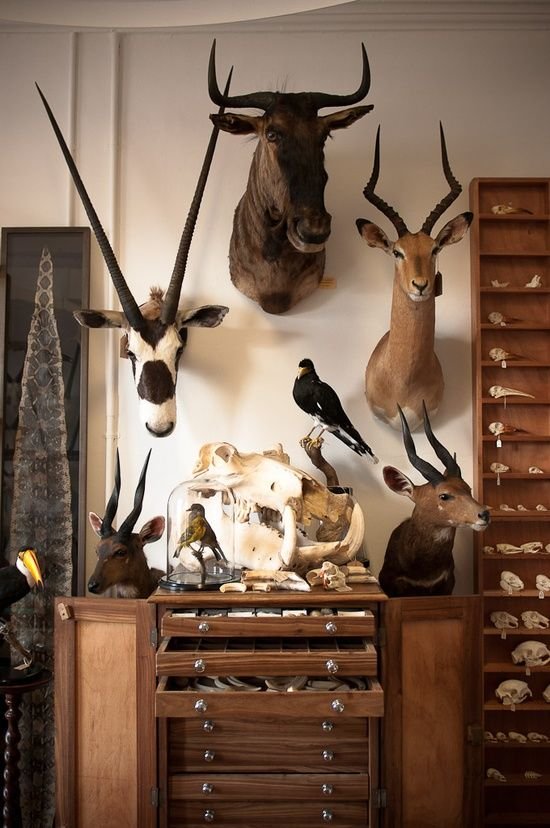
Without its original flesh, tanned skin is without any volume and body to give it form, basically behaving like a blanket (or deer skin blanket, to be specific).
As the skin is the only part of the specimen that can be turned into something that does not rot through tanning, apart from its other fleshy parts, separating the skin is a necessary process.
It is at this point where the mounting kits will be of use which gives the tanned animal hide body and volume in order to mimic its original form.
Artificial in composition, these materials to be used with the treated skin do not rot and are basically a substitute to the specimen's original flesh that do rot such as the muscle tissues and the eyeballs.
This is actually where the true artistry comes about. Trying to create a smooth, light form that needs little maintenance after mounting is one of the goals of taxidermy. You can use any material for stuffing and structuring your tanned hides, but only the dedicated artisans know how to do it with whatever is on hand.
You know you already did a fine job with your taxidermy when your mounted deer head or full-body taxidermy already looks like its live counterpart.Whether you make a deer wall mount to be hung or make a full replica of a live deer, the overall process of taxidermy already would have ended at this point.
Should you prefer antlers for your specimen which do not necessarily have horns such as a whitetail deer skull, there are replica deer antlers you can use with your specimen for a deer antler mount.
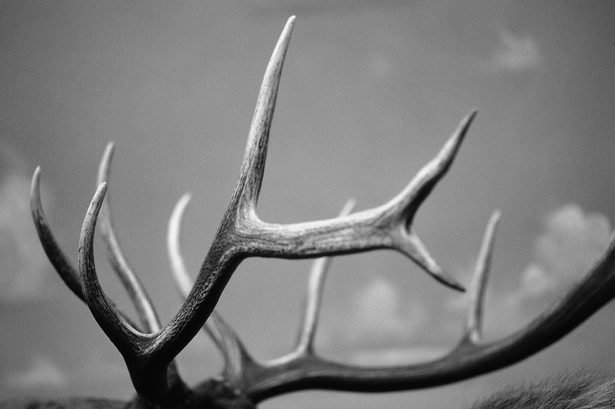
“Where to buy deer antlers?” you ask? They're not as hard to find as you'd think... You might want to check out our article on all the best deer taxidermy products available on Amazon.
But then if your specimen is an actual deer with its own antlers, then you can proceed with the casting procedure for a deer skull with antlers.
Others prefer only to make deer antlers mounted on the wall without the rest of the specimen. Sometimes, traditionalists in the field argue that this hardly constitutes taxidermy since no skinning, tanning or stuffing was done.
Others simply look at it as a form of art that can be expressed in whatever way you choose.
Take it as a deer head trophy, a worthwhile hobby, or something profitable to you, your output is solely up to you. Use this article as a starting point for your taxidermy journey.
DIY Taxidermy: We All Have to Start Somewhere
29 Aug, 2015Bird Taxidermy for Dummies
19 Aug, 2015The Definitive Bear Taxidermy Primer
13 Aug, 2015Faux Taxidermy: Is the Real Deal Too Much?
13 Aug, 2015Pet Preservation: Pet taxidermy and Beyond
10 Aug, 20159 Times Taxidermy Went Viral: When The World Reacts
10 Aug, 201515 Great Taxidermy Blogs You Should Be Reading Now
04 Aug, 2015All The Different Types of Taxidermy